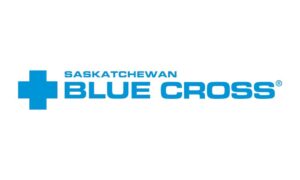Inflation and nat cats in focus for H2 in reinsurance: Moody’s

The effects of inflation and the potential for natural catastrophe losses are the two main issues that are in focus for the reinsurance industry, as the second-half of the year progresses, according to Moody’s Investors Service.
These two issues are equally relevant for the insurance-linked securities (ILS) market, as here too practitioners are working to both control and factor in inflationary effects, into pricing and reserving, while keeping one eye on the tropics at this peak-peril catastrophe season time of the year.
Moody’s notes in a recent report that claims inflation was trending higher even before the current surge in consumer price inflation.
Rising repair, material and labour costs have affected the property insurance, reinsurance and ILS space, which has been lifting property claims costs higher and also been a driver of loss creep when under-reserved for.
Wage inflation is seen as another potential factor for the reinsurance industry to watch out for, especially if the current inflationary trend becomes entrenched, Moody’s cautions.
So far this year, Moody’s said that, “We believe that so far this year, the reinsurers have been able to offset claims inflation via price increases, protecting their current year underwriting profitability.”
With the higher pricing having filtered through to ILS markets, both in terms of higher coupons for catastrophe bonds and rates-on-line for collateralized reinsurance and retrocession structures, this suggests that so far the ILS market will also have offset the inflationary effects, to-date.
Reinsurers have been using tools such as indexation of premiums to inflation and sliding scale commissions, to manage potential inflation negative impacts, and Moody’s is also confident they will manage it on the reserves side as well.
“We also believe the reinsurers will adequately reflect expected claims inflation trends in their reserving, despite the challenges associated with inflation forecasting,” Moody’s explained.
However, the rating agency cautions that reserves set for prior year losses could be more of an issue.
“Reserving adequacy for prior year claims is in our view less certain, as the recent jump in inflation might not be reflected in current reserving levels. Even in short-tail property lines, where there is greater visibility over future claims than in longer-tail business, loss cost trends suggest claims inflation is running at levels in excess of initial best-estimate reserving assumptions,” Moody’s warns.
That will read-across to ILS markets as well, as they could face similar negative surprises if reserves turn out to be inadequate to cover inflated claims quantum.
In addition, Moody’s also warns that social inflationary effects are back, after a pandemic lull, with court proceedings back at pace following the pandemic.
For reinsurers with longer-tailed lines of business, Moody’s sees a risk that some reserve strengthening may be needed in future.
Reserve releases have waned in recent years across the reinsurance market, so with inflation stronger there is a growing chance of reserves proving inadequate, in some cases.
This should be cautionary to those in the ILS market venturing into non-catastrophe areas of the market such as casualty ILS lines, as the last thing any ILS investor wants is to find their capital is supporting a book of business that develops negatively against the reserves that have been set.
With reserve redundancies now weaker, there is less scope for reinsurers to massage away the effects of strengthening, so any reserve top-ups are likely to become increasingly visible, Moody’s believes.
Finally, natural catastrophe claims, which are the other main focus for the second-half of 2022, Moody’s says.
Natural catastrophes have already weakened the results of the reinsurance market through the first-half, despite coming in at relatively average levels.
“With the peak North Atlantic hurricane season still to come, there is a risk that they might do so again in H2,” Moody’s warns.
Catastrophe budgets have been eroded in the first-half in some cases and this can also mean some ILS structures are facing more risk through the second-half of the year too.
While reinsurance pricing has hardened and is likely to continue to do so, Moody’s warns that, going forwards, “Rising prices will be partly offset by claims inflation, limiting their positive impact on underwriting profitability.”
Hence, major catastrophe losses could quickly erode much of the reinsurance sectors profitability and show up any inadequacies in how markets have factored inflationary effects into their pricing.






